New England
Prettiest Towns in New England | A Sampler of Picture-Perfect Villages
White-steepled churches, country stores, black-shuttered white clapboard houses, and bobbing boats provide the backdrop to the prettiest towns in New England.

Coffee By Design | Portland, Maine
Photo Credit : Katherine KeenanPRETTIEST TOWNS IN NEW ENGLAND
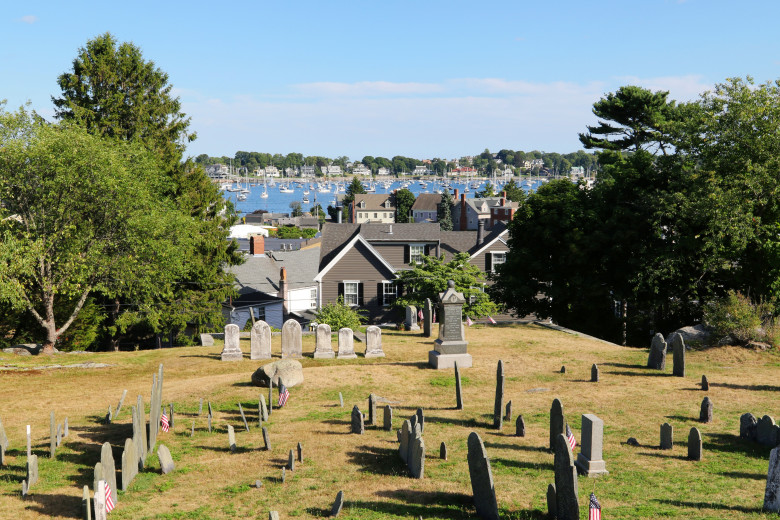
Photo Credit : Alyson Horrocks
MARBLEHEAD, MASSACHUSETTS
Route 114 is a sadist’s idea of a road. Yes, there are signs for its twists and bends, but they’re hidden behind overgrown branches. But the payoff is well worth the frustration. For beautiful coastal settings, Marblehead is hard to beat. Downtown, settled in 1629 and known appropriately as Old Town, seems to tumble to the long harbor, which is filled with fancy yachts and ringed with lush estates and yacht clubs. If you don’t own a boat or have a close friend who does, the next best view of the harbor is from Crocker Park. Settled by fishermen from West England and the Channel Islands, Marblehead, by 1649, was called “the greatest Towne for fishing in New England.” By 1720 its shipowners had expanded beyond fishing into overseas trading. The oldest houses, jumbled together with minuscule gardens by the harbor, reflect the settlers’ humble origins and miserly desire to save timber and preserve heat; the houses of the later shippers display 18th-century conspicuous consumption. The layout of Marblehead follows the perverse logic of any early seaside village. Streets twist and end abruptly as they skirt the hills and rolling topography. Getting lost here — on your way to find Front Street and the harbor — is the point of going to Marblehead. Unfortunately, many visitors get no farther than the boutiques along Washington Street, which is a shame. To help you wander, stop by the chamber of commerce’s information booth for a booklet with a walking tour of town. At some point you need to make your way to Abbot Hall to see the celebrated painting The Spirit of ’76, located in the selectmen’s room. Make time a picnic lunch in Crocker Park.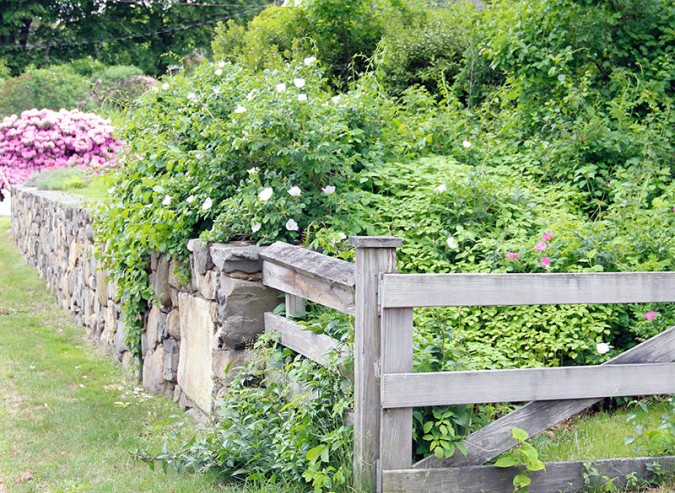
Photo Credit : Brenda Darroch
KITTERY POINT, MAINE
If you think that Kittery is just the mall-to-mall strip of outlets along Route 1, you have a very pleasant surprise waiting. Make a detour on Route 103 toward Kittery Point, the oldest town in Maine, first settled in 1623. The road rolls along to the sea, passing through sparsely populated countryside. Where there’s a sharp turn, look closely for the grand (and private) Lady Pepperrell House, built in 1760. Across the street is the First Congregational Church, built in 1730. Farther along, the Fort McClary Memorial is the remnants of a fort named for a local soldier who died at the Battle of Bunker Hill. A cluster of houses, a post office, a church, and a market describe the town. But if you want lobster outdoors in the Maine tradition, continue on Pepperrell Road and look for the sign for Chauncey Creek Lobster Pier, which will direct you down narrow Chauncey Creek Road. On your right is the Lobster Pier. With a view of forested Gerrish Island from one of the brightly painted picnic tables on the deck and perhaps a cooling breeze coming upstream, this feels miles from anywhere. The Lobster Pier serves lobster — the lobster rolls come doused with paprika on an un-toasted hamburger bun — clams, and steamed mussels in wine and garlic. You have to bring your own wine or beer. After lunch, take the turn onto Gerrish Island and visit Fort Foster. I’m no great fan of fortifications, but this one has a view of the distant Isles of Shoals (the far lighthouse is on White Island; the closer one is Whaleback Light at the mouth of the Piscataqua River) and rocky coast to clamber.KINGFIELD, MAINE
Most people make the trek to Kingfield, in Maine’s western mountains, to go skiing at its big neighbor, Sugarloaf/USA. I can think of at least two other good reasons to visit. Named for William King, its founder and Maine’s first governor, Kingfield has matured on the ski business, but it was born on lumber mills. Main Street looks as if it would be comfortable in the Old West, its clapboard stores bellying up to the road. The Herbert Hotel, a Victorian whimsy built in 1918, has been restored with a Gilded Age feeling and acts as command center in town. For dinner, those in the know move to One Stanley Avenue, which prides itself on using fresh, local ingredients. It is known as one of the best restaurants in the state. Kingfield has a favorite son, actually two of them. The twin Stanley brothers, of Stanley Steamer automobile fame, were born here. The Stanley Museum, in a former schoolhouse, teaches just enough about them through explanatory panels and exhibits — two restored and running Stanley Steamer motor cars, letters, some technical knickknacks — to make you realize what an amazing invention an automobile is. Look for the letter from the widow of F. E. Stanley, who died in a car accident in 1918, a most poignant description of love lost. But the unexpected delight is the display of photographs by Chansonetta Stanley, the brothers’ beautifully named and very talented sister. Long before most women had careers — or were photographers — Chansonetta captured in black-and-white photos the rural world of Kingfield (and beyond). The faces of those farm girls pictured 100 years ago look as fresh as any teenager’s today. For all of Kingfield’s Victorian charm, its 20th-century ski aura, and its famous Stanley brothers, it’s Chansonetta’s story that stays with me on the long drive home.
Photo Credit : Brenda Darroch
NEW HARBOR, MAINE
At the eastern side of Pemaquid Point, this town has had about as picture-perfect a harbor as one could wish for — for centuries. This was the home of Samoset, the Indian who startled the Pilgrims in Plymouth in 1621 by greeting them with, “Much welcome, Englishmen.” Seems Samoset had hobnobbed with the English sailors who fished off nearby Monhegan Island. Today New Harbor is small and sheltered, ringed with pine trees and home to as many working lobster boats as sailing boats. Best of all, you can have a nice seat from which to view all this lovely scenery at Shaw’s Fish and Lobster Wharf Restaurant, 207-677-2200. Order your lobster and iced tea, then choose your picnic table out on the deck. Fishermen unload their catch, and the boat to Monhegan Island takes off from here as well. With so much to see, you’d better order a strawberry shortcake to keep up your energy. A trip to the very tip of the peninsula will take you to the 1827 Pemaquid Light and its tiny Fisherman’s Museum. Here the earth rolls into the sea with big, wave-smoothed rocks, perfect for scrambling over in late-afternoon light.
Photo Credit : Aimee Seavey
GRAFTON, VERMONT
The approach is on a washboard dirt road, the perfect entrance to this secluded slice of Greek Revival New England in the Vermont mountains. This, you think, is how our ancestors traveled, being bounced about by bumps. Protected from macadam, Grafton, Vermont, is a gem of the early 1800s. True, it’s had a little help in looking so pristine from the Windham Foundation, which bought and restored the entire town. But there’s no denying it’s pretty. Everyone’s first reaction to Grafton is to wander up and down the streets. Everyone’s second reaction to Grafton is to take up residence in one of the rocking chairs that line the porch of the Grafton Inn (formerly the Old Tavern), which has been offering rooms to the weary since 1801. I’m sure that for at least that long, carloads of New Yorkers have been transformed into rocking hayseeds by this porch. The Grafton Inn offers a small-town experience with a stay in one of the inn’s rooms, in one of its cottages, or in one of the seven guest houses tucked around town. You’ll be in good company — among visitors have been Ulysses S. Grant, Teddy Roosevelt, Henry David Thoreau, and Rudyard Kipling. For the active, there are 30 kilometers of hiking, tennis courts, and a natural swimming pond — but those rocking chairs are tempting. All of that rocking and watching nothing in particular works up an appetite. The inn has a pretty greenhouse setting for its lunch guests, housed in the rustically renovated barn and furnished with a herd of Windsor chairs.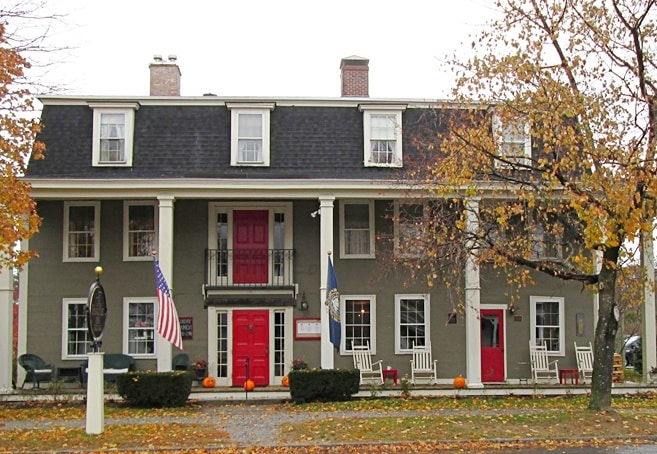
Photo Credit : Deb Despres
HANCOCK, NEW HAMPSHIRE
In the brilliance of autumn, half the world is climbing Mount Monadnock and the other half is visiting nearby Hancock, New Hampshire. Established in 1779, the town was named for John Hancock, who owned a lot of it but neither visited nor, according to the weighty History of Hancock, “appeared to have in the least interested himself in its welfare.” Despite that, Hancock (the town) turned into a charming village with a pretty Victorian bandstand, handsome houses set back modestly from the street, and a Congregational church that dates to 1820, its bell cast in Paul Revere’s foundry two years after his death. Stroll the main street, have lunch at the gourmet deli, Fiddleheads, and check into the Hancock Inn for dinner and a good night’s sleep (as travelers have been doing at this inn for more than 200 years).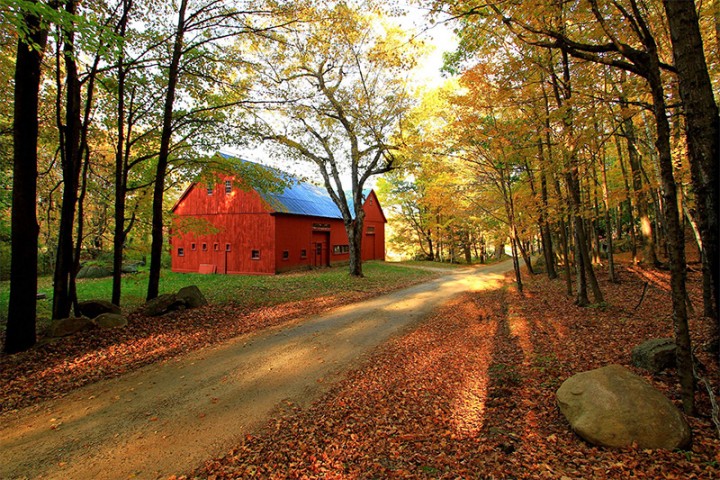
Photo Credit : Mike Sparks
HARRISVILLE, NEW HAMPSHIRE
From Hancock take Route 137 south, and in a little over three miles look for Hancock Road on your right. This will take you past Lake Skatutakee and into the tiny town of Harrisville. This is perhaps my favorite of all. Here tidy brick buildings and a large granite mill are strung along the millstream that once powered a woolen mill. On the hill sits a long boardinghouse. The buildings are fully restored, thanks to a nonprofit group that leases them out to various businesses, including the internationally known Harrisville Designs, makers of looms and yarns for handweavers and knitters. If you turn right at Harrisville Designs and cross the bridge, you’ll find a group of five millworkers’ houses called “Peanut Row.” Beyond these is Sunset Beach, the town’s private little beach and a nice spot for a picnic. Harrisville is the village most painted by artists (even more than Hancock) and is one of the oldest existing textile communities in the country, a National Historic Landmark village. And you don’t want to visit this charming small town without popping into the Harrisville General Store.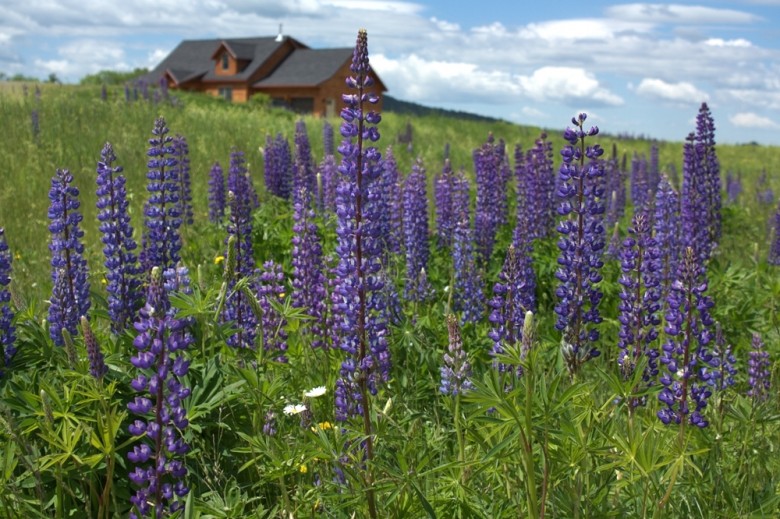
Photo Credit : Chris Burnett
SUGAR HILL, NEW HAMPSHIRE
This is Sugar Hill: a bend on Route 117, a curve, and a hill. A beautiful spread of barn and fields called Iris Farm that’s best seen in morning mists, a small inn called Hilltop Inn, and a restaurant devoted to flapjacks called Polly’s Pancake Parlor. It doesn’t sound like much, but trust me, it is. Don’t miss the Annual Fields of Lupine Festival in early June.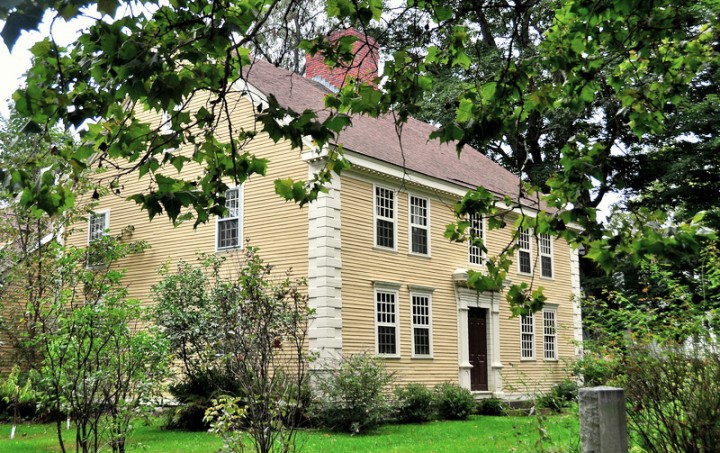
DEERFIELD, MASSACHUSETTS
Time and Route 5 may have passed Old Deerfield by, but history lovers do not. Along this historic town’s wide mile-long Main Street, a dozen of the houses are preserved as museums. At first glance, it’s not easy to tell which are house museums and which are private homes — all are immaculately restored and maintained. Twice sacked by Indian raids, Old Deerfield is preserved from modernity’s raid by Historic Deerfield, which runs many of the house museums. The fascinating (and compact) Memorial Hall Museum is run by the Pocumtuck Valley Memorial Association. In a town first settled in the 1660s, there’s lots of history to absorb. Some of the museums feature the architecture of the houses, others emphasize a particular collection such as silver or textiles. While Deerfield focuses on its history, it does so without the costumed guides of Plimoth Plantation or Old Sturbridge Village. A walk down Main Street takes you past houses built in the 1700s, with their dark facades, and Deerfield Academy, with its flurry of prep- school students. A walk in autumn surrounded by yellow leaves is especially pleasant. If the number and scope of the houses is a little daunting to you (or you have a car of fidgety kids), at least visit the Memorial Hall Museum, which sums up tidily the town’s history through photographs, paintings, and historic costumes. Most celebrated in its collection is the doorway of the John Sheldon House, which was razed in the mid-19th century. The door, however, warranted saving because it had survived the February 1704 Indian attack — hatchet marks and poundings are still evident, still capable of sending shivers down your spine.BREWSTER, MASSACHUSETTS
When I begin to think that Cape Cod is all built up and way too popular, I drive Route 6A, skirting the northern rim, to be reminded that Cape Cod still has its charms. The towns along the way — Sandwich, Barnstable, Yarmouthport — all have handsome houses built by sea captains and town centers humming with antiques stores and markets. They also have, for some reason, an incredible number of bird carvers nesting here. Brewster is not the oldest; settled in 1656, it’s younger than Sandwich, the first town settled on the Cape in 1637. But it’s my favorite for dining. It may be difficult to get reservations for dinner at Chillingsworth, but it tops the Cape’s list of restaurants every year. Antiquing along Main Street caters to both the serious collector and the seeker of collectibles. Two churches and an ancient graveyard complete the town. In early spring the herring make a frenzied show at the Stony Brook Grist Mill on Stony Brook Road. Year-round the Cape Cod Museum of Natural History introduces children and grown-ups to nature’s side of the Cape — there are aquariums of amphibians, displays of shells and bugs, and depictions of the havoc that pollution is wreaking. Check the tide schedule, then follow one of the paths behind the museum that leads out to the marshes.
Photo Credit : Debbie Despres
OLD WETHERSFIELD, CONNECTICUT
When architects see something they like, they tend to stand in one place and waggle their hands a lot. Strange words like dentil, quoin, pilaster, and oriel spring from their lips. If you’d like a demonstration of this, take an architect to Old Wethersfield, just south of Hartford. Established in 1634, this town was an important port on the Connecticut River — until the river changed its course and left Old Wethersfield behind. Passed by, the town retained its past — and grew as a suburb of Hartford. Today it is an unusual community because it has at least one house in every architectural style from every period in America, from an early Colonial with overhang to low-slung ranch houses and everything in between. Architects go wild. Wethersfield grew on agriculture, primarily onions. There are a number of historic buildings open to the public, including the Webb-Deane-Stevens Museum, a melding of three 18th-century houses. Inside you can see the contrasting lifestyles of the resident diplomat, merchant, and leather worker. George Washington really did sleep in the Webb house. Gardeners, here also is the home of Comstock, Ferre & Co., the nation’s oldest continuously operating seed company. After cruising around the streets of town, drive to the old cove, what was the original bustling harbor, to view Wethersfield’s — and the country’s — only remaining 17th-century warehouse. This now-quiet spot saw exports of fish and salt beef in the 1640s and imports of rum, molasses, and wool in the 1700s. All the commotion of busy trade seems very far away, especially when you’re standing under a tree listening to birdsong.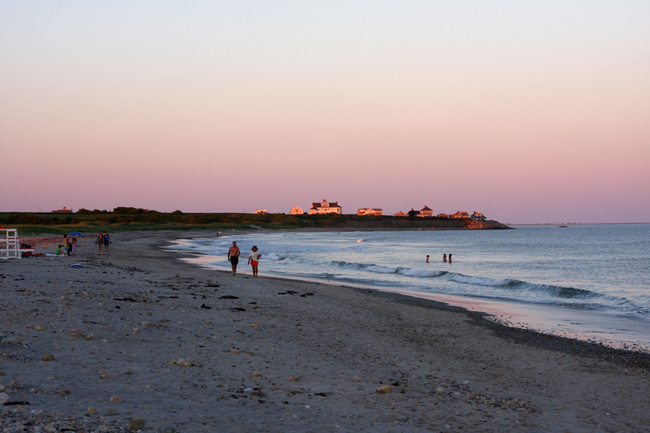
Photo Credit : Lombardi, Butch




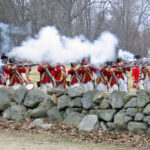



I’d love to see you include Litchfield, CT – it has the traditional town green, a white spired Congregational Church, and many original well preserved homes from the 1600’s and 1700’s.
I checked the website for Hilltop Inn — their price list is from 2005-2006. It would be nice to think the rates haven’t gone up….
Loved this article. I visited Harrisville on your recommendation and fell in love with the town. Spent a bit of time at Harrisville Designs…and left with gorgeous yarn! I will be trying to get to these little towns in the next year!
I lived in Harrisville in the mid 1980’s. It is everything you say and more. A beautiful village off the beaten path.
Sugar Hill is best seen in early June, when alll the Lupine are in bloom. As you wind through the village, you see fields of Purple Lupine everywhere. It is magnificent!
“Protected from macadam, Grafton is a gem of the early 1800s. True, it’s had a little help in looking so pristine and all from the wealthy Windham Foundation, which bought and restored the entire town. But there’s no denying it’s pretty.”
Just wanted to throw out there that the Windham Foundation does not own the town of Grafton in any way. While they helped restore many buildings in the village, and own The Old Tavern as well as Grafton Village Cheese, the town itself is a regular town with 600 residents. And it is a beautiful town that has a lot to offer visitors! You can find out more on the Foundation at windham-foundation.org. It’s a nonprofit dedicated to promoting Vt.’s rural communities.
Cap’t Simeon’s Galley has been closed for several years and the restaurant that replaced it is also closed and Frisbees Market is now a wine store.
Thanks for bringing that to our attention, Pat.
I spent a year in Harrisville, 1966-67, as a master at the Thomas More School; my last year before ordination. What a beautiful memory of the Town, the School, the staff and students, the good neighbours, and a visit to the OFA homestead in nearby Dublin. I believe Harrisville was chosen as the most pictoresque town in New Hampshire, and deservedly so. I will never forget the Xmas party given for all of the children of the town. And I still get my Old Farmers’ Almanac every year. I’m a dyed-in-the- wool New Bedford Yankee and how I do miss the great seafood, the best clam chowder, stuffed quahogs, fried clams, and real fish and chips.
From Montreal. Nice, but I’m still a New England Yankee.
Meredith NH is Currier & Ives beautiful!
Could not agree more!!! Beautiful Lakes Region surrounded by mountain ranges with Lake Winnipesaukee, beautiful scenery and art. Most beautiful place!!!
Surprised Center Sandwich NH wasn’t on the list. Home of Sandwich Fair. Picture perfect town center. Amazing views of mountains!
Thank you, Jason Evans, for pointing out this correction ref the Windham Foundation.
Amherst, NH should be on this list. Gorgeous village center right out of a Norman Rocksell painting. Picturesque Baboosic Lake and outdoor wonders everywhere. Stunning.
Groton, MA is a typical New England town kind of beautiful. While their Main Street isn’t long, it is iconic. West Brookfield’s town common is lovely, too. And Sturbridge, MA and Stockbridge, MA are pretty amazing too. But the jewel in New England’s crown HAS to be Woodstock, VT. Far and away the prettiest town tbere is.
Lebanon, CT is a New England town that should be considered as one of your most beautiful–Revolutionary cemeteries, War Office, and the Lebanon Congregational Church at one end of the Town Green. All around the green, historic homes and museum. I LOVE my home–Lebanon, CT Come check it out!
Check out Simsbury, CT. I find your lists are always very light on CT, especially anything to do with the shoreline. The Southeastern CT shore (Mystic, Stonington, Niantic, Old Saybrook) is wonderful.
Hi Lisa. Thank you for your comment. I hope you’ll be pleased to know that Mystic and Old Saybrook can be found on our list of Best Connecticut Coastal Towns. You can view it here: https://newengland.com/today/travel/connecticut/best-connecticut-coastal-towns/ Thanks!